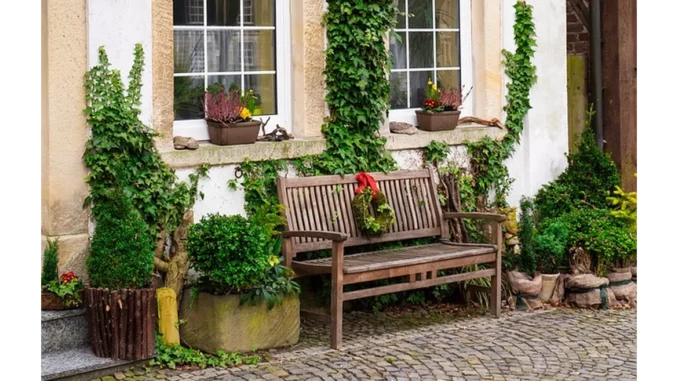
Designing an intimate garden space presents both a delightful challenge and a rewarding opportunity to craft a vibrant sanctuary amid limited confines. Whether you are a novice gardener or possess a seasoned green thumb, the art of small garden design demands thoughtful planning to unlock its full potential. Let us explore a series of expert strategies that can metamorphose your petite outdoor area into a lush and captivating retreat.
Turn your garden into your private retreat, enjoyable day or night complements of Elegancia.homes.
1. Elevate Your Space with Vertical Gardening
In the realm of limited horizontal space, vertical gardening emerges as a masterstroke of ingenuity. Harness the potential of verticality by integrating trellises, vertical planters, and wall-mounted pots. Climbing plants such as ivy, clematis, or jasmine will not only infuse your garden with verdant splendour but also create an illusion of depth and height, thus expanding the perceived dimensions of your space. Garden designer Sarah Greenwood suggests, “Vertical structures can transform even the smallest garden into a multi-dimensional experience.”
2. Enrich with Foliage and Form
In compact gardens, foliage can rival blooms in its ability to captivate. Opt for plants with intriguing textures and forms to maintain visual engagement throughout the seasons. Consider ferns, hostas, and ornamental grasses for their textural allure, while evergreens provide steadfast structure and colour even in the starkness of winter. In the words of landscape architect James Barrett, “The dance of textures and forms can weave a tapestry of enduring beauty.”
3. Achieve Depth through Layering
The art of layering plants by height introduces a sense of depth, rendering your garden more expansive. Position taller flora such as sunflowers or hollyhocks at the rear, medium-height selections like daisies or salvias in the middle, and low-growing groundcovers such as creeping thyme or sedum at the forefront. This tiered arrangement not only optimises space but ensures that each plant enjoys its moment of glory.
4. Embrace the Versatility of Containers
In the world of small gardens, containers serve as indispensable allies. They afford the flexibility to reposition plants, explore varied arrangements, and nurture species that defy local soil conditions. A curated ensemble of pots, diverse in size and material, can enhance visual interest. Herbs, annuals, and even compact trees flourish in these vessels, offering boundless adaptability and diversity.
5. Design Multi-Functional Spaces
In a diminutive garden, every square foot is precious. Ingenious design can yield multi-functional spaces that serve several purposes. Envision a petite patio that transitions seamlessly from dining area to tranquil retreat, or a compact greenhouse that doubles as a plant nursery and tool storage. As garden consultant Emma Thompson notes, “Creativity is key in maximising the utility of every inch.”
6. Infuse with Colour and Thematic Flair
Colour wields the power to transform a garden’s ambience. Bold, vibrant hues inject energy into small spaces, while a monochrome palette imparts calm and harmony. Select a colour scheme that resonates with your personality and complements your home’s exterior. Themed garden vignettes, such as a Mediterranean alcove with lavender and rosemary or a tropical corner with palms and ferns, can further personalise your oasis.
7. Optimise Light and Shade Dynamics
Understanding the interplay of light and shade is crucial for strategic plant placement. Some areas bask in full sun, while others languish in shade. Choose plants suited to these microclimates, such as sun-loving lavender for radiant spots and shade-tolerant ferns for dimmer corners. Mirrors or reflective surfaces can amplify light in shaded areas, brightening and enlarging your garden’s feel.
By embracing vertical gardening, prioritising foliage and form, layering plants, utilising containers, creating versatile spaces, experimenting with colour, and capitalising on light dynamics, one can transform a modest garden into a vibrant, enchanting oasis. As renowned horticulturist Jane Ellis asserts, “A small garden, when thoughtfully designed, can be as richly rewarding as its sprawling counterpart, with beauty and innovation flourishing in every corner.”


Be the first to comment